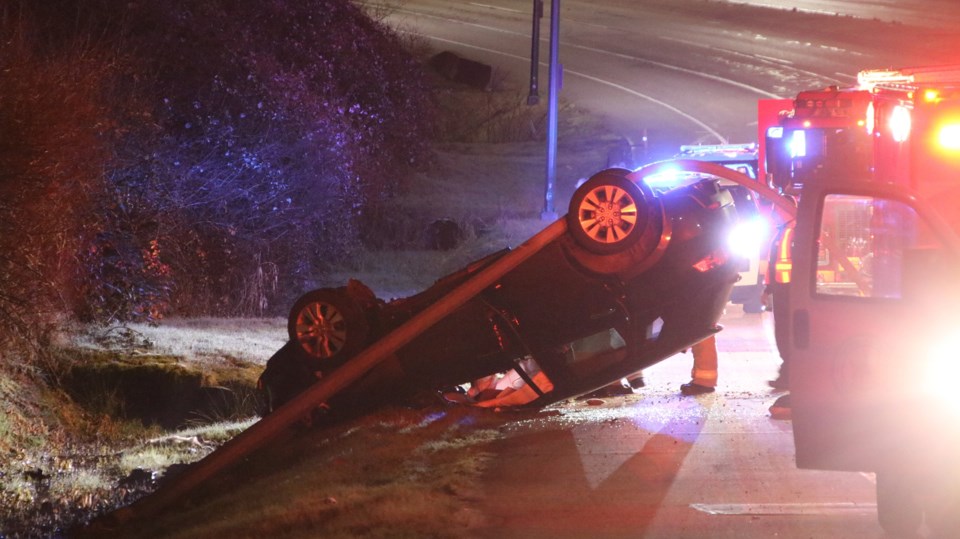I can’t stop looking at the photo attached to this column. It’s just terrifying. A vehicle rolled over recently on the Barnet Highway in Burnaby.
It’s not the first time, of course.
Crashes on the Barnet are a regular occurrence. During the day, commuters get fed up with traffic on Hastings and so when they hit the Barnet it’s time to re-create the Fast and the Furious – only without Dom Torreto’s driving skill.
At night it’s even worse. The road gets so quiet that drivers (some intoxicated after a night at the clubs) open it up and drive so fast they can’t handle the Barnet’s curves.
The Burnaby RCMP traffic enforcement team is a regular visitor to the Barnet as they set up speed traps that always catch lots of speed demons. It’s like catching fish in a barrel.
I’m writing about this in the hopes that at least one person will read and think to themselves, “Hey, maybe I should slow the heck down on the Barnet.”
Then there is the issue of cycling along the Barnet. I wrote a previous blog that include comments from Keith Constable, who cycles Barnet several times a week.
“The Burnaby end of the Barnet Highway has a messy end as far as bike lanes go,” he said. “As you come up the hill from Barnet to Hastings, the bike lane just ends and bikes are inserted into the HOV lane. This is a little dangerous and I see people riding on the sidewalk to avoid this section.”
Constable responded to my tweet asking cyclists to talk about Barnet and he says it’s gotten “better” over the years.
“It’s a lot cleaner than it was, but it is essentially the same shoulder we ride on as it was 10 years ago,” he said. “The differential in speed between the bikes on the shoulder and the cars and trucks in the HOV lane is enormous and that can be a little scary when the vehicles encroach on the bike lane/shoulder.
“This seems to be a skill-deficit problem,” Constable continued. “I observe drivers slowly drifting out of the driving lane and into the shoulder on the numerous twists and turns the Barnet makes. People seem to drive a tangent across the corner as opposed to staying in the centre of the lane as it curves around. About a once a month, I experience a ‘too close for comfort’ vehicle drifting into the bike lane I’m occupying.”
What Constable would like to see is some sort of “virtual separation” between the vehicle and bike lanes, such as installing every 20 metres plastic markers that fold flat if hit.
“It would offer no real protection, but may help with the drifting out of lane issue,” he said.
In the absence of that, drivers just need to be more aware of cyclists on the road since they are only separated by painted lines.
Yes, drivers don’t like to be criticized, but look at all the carnage on the road. Slowing down and paying attention can only help saves lives.
Follow Chris Campbell on Twitter @shinebox44.





